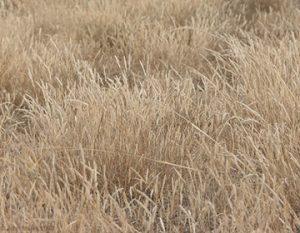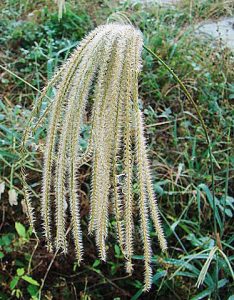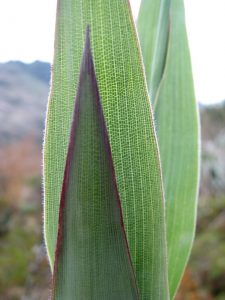UNC researchers Alan Jones and Corbin Jones recently received a $1.2m grant from the National Science Foundation (NSF) to conduct research over 4 years to better understand the genetic characteristics of grasses across Ecuador – including the Galapagos – and how the genes within these grasses allow them to respond to changing light environments. A better understanding of how plants, especially grasses, respond to light can assist in developing shade tolerant crops. This work began with a seed grant from UNC Center for Galapagos Studies and is in collaboration with our friends and colleagues Professors Maria de Lourdes Torres and Hugo Valdebenito at Universidad San Francisco de Quito (USFQ). Part of the project was and will be conducted at the Galapagos Science Center.
environments. A better understanding of how plants, especially grasses, respond to light can assist in developing shade tolerant crops. This work began with a seed grant from UNC Center for Galapagos Studies and is in collaboration with our friends and colleagues Professors Maria de Lourdes Torres and Hugo Valdebenito at Universidad San Francisco de Quito (USFQ). Part of the project was and will be conducted at the Galapagos Science Center.
Project Abstract:
The problem of getting a clear signal in a noisy environment is a problem that not only humans must resolve but one that all organisms in nature experience. The goal of this research is to determine the rules by which plants respond to noisy and variable light signals. The investigators hypothesize that switching between low and high levels of light over varying periods of time changes how light is detected by plants.  To study this problem, grasses were chosen because grasses evolved to grow in many types of light environments such as on the forest floor where light flickering and shadows are common to open fields where the light changes very little except for clouds and time of day. The investigators hypothesize that the ability for grasses to thrive in these different light environments is encoded in their genomes. The project will examine how genomically encoded sensing adaptations to dynamic and constant light environments shapes the physiology, development, genetics, and evolution of grasses. Investigators will cross train graduate students and post-docs, especially those from underrepresented groups in state-of-the-art molecular biology, physiology and genomics. Seminars will bring together internationally recognized experts in plant ecology, evolutionary biology, plant physiology and genetics with students and scientists who want to apply these perspectives to understand how plants respond to dynamic environments. Up to 60 new post-baccalaureate analysts will participate in international training workshops.
To study this problem, grasses were chosen because grasses evolved to grow in many types of light environments such as on the forest floor where light flickering and shadows are common to open fields where the light changes very little except for clouds and time of day. The investigators hypothesize that the ability for grasses to thrive in these different light environments is encoded in their genomes. The project will examine how genomically encoded sensing adaptations to dynamic and constant light environments shapes the physiology, development, genetics, and evolution of grasses. Investigators will cross train graduate students and post-docs, especially those from underrepresented groups in state-of-the-art molecular biology, physiology and genomics. Seminars will bring together internationally recognized experts in plant ecology, evolutionary biology, plant physiology and genetics with students and scientists who want to apply these perspectives to understand how plants respond to dynamic environments. Up to 60 new post-baccalaureate analysts will participate in international training workshops.
Changes in genomic elements at several scales of organization that increase the fitness of an individual are maintained while those changes that decrease fitness are counter selected for propagation. Genomic elements that are neutral to fitness are filtered away relative to the energy cost of maintaining them. These rules are well established at the scale of genes but not yet scalable to genomes. This project takes an integrative approach to this question by characterizing the full genomes of a phenotypically diverse, yet monophyletic, set of grasses from Ecuador. These grasses live in diverse habitats ranging from the Galapagos Islands, the Paramo’ (alpine tundra), the rain forest, and riparian and littoral zones. These grasses also have a wide range of habits (tillering vs vines vs. bushy vs. tree-like), autotrophic metabolism (C3 vs. C4 carbon fixation), and survival strategies (perennial vs. annual). The specific question to be addressed is what genes/alleles shape morphologies/physiologies expressed in dynamic light environments as opposed to stable light environments. This project brings together two basic disciplines: botany and genomics but extends the connections into cell biology, developmental biology, evolution, and systematics.
propagation. Genomic elements that are neutral to fitness are filtered away relative to the energy cost of maintaining them. These rules are well established at the scale of genes but not yet scalable to genomes. This project takes an integrative approach to this question by characterizing the full genomes of a phenotypically diverse, yet monophyletic, set of grasses from Ecuador. These grasses live in diverse habitats ranging from the Galapagos Islands, the Paramo’ (alpine tundra), the rain forest, and riparian and littoral zones. These grasses also have a wide range of habits (tillering vs vines vs. bushy vs. tree-like), autotrophic metabolism (C3 vs. C4 carbon fixation), and survival strategies (perennial vs. annual). The specific question to be addressed is what genes/alleles shape morphologies/physiologies expressed in dynamic light environments as opposed to stable light environments. This project brings together two basic disciplines: botany and genomics but extends the connections into cell biology, developmental biology, evolution, and systematics.
